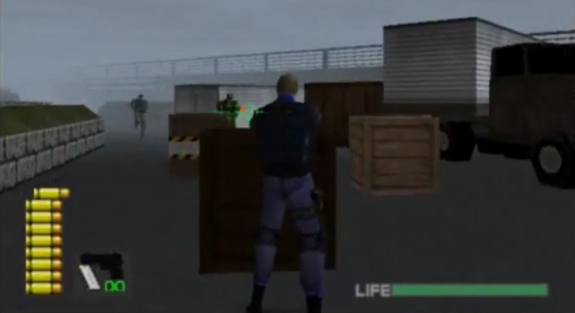This post has not been edited by the GamesBeat staff. Opinions by GamesBeat community writers do not necessarily reflect those of the staff.
Editor’s note: I’ve been playing a number of shooters with sticky cover lately, so Daniel’s article caught my eye. Is it time for developers to pull away from the sticky-cover mechanic? -Brett
The first Gears of War has become my latest stop after recently acquiring an Xbox 360. This is a particularly interesting game for me because I’m not enthused by the proliferation of sticky cover systems in today’s shooters. I was waiting for Gears of War, the game that inspired this wave, to finally prove to me that pressing a button to move into cover really is necessary.
I think the main reason I don’t view cover systems as a revolutionary innovation like most other gamers is because I already went through my fascination with the mechanic during the previous two console generations. Gears didn’t invent cover at all; it was just the game that finally managed to popularize it.
One of the coolest parts of playing Metal Gear Solid in 1998 was being cautious and checking around corners. WinBack for the N64 was probably the first time where taking cover made me feel like I was in a tactical SWAT-style firefight out of the movie Heat or something. From there the mechanic actually became pretty common throughout the PS2 era, showing up in games like Splinter Cell, James Bond 007: Everything or Nothing, and even Enter the Matrix.
By the time Rainbow Six Vegas and Splinter Cell: Conviction came out on 360 and PS3, I was already kind of burned out on the chest-high walls populating every game out there. All these shooters started to blend together, with little to differentiate them. Gears of War succeeds with its cover system because developer Epic didn’t merely paste it on top of a third-person shooter — they designed an entire game around it.

Now, just because one game uses that mechanic really well doesn’t mean that mechanic is the best way of doing things. I actually find the “cover” button to be a rather restrictive method of letting players do something very simple: hide behind things to protect themselves.
The Call of Duty games ask you to use cover almost as much as Gears does, but there is no cover button. You simply take cover by getting behind stuff while ducking and sidestepping out or (in the case of the PC versions) leaning. Ducking and leaning basically accomplish the same thing without actually cementing your character to a wall, and it doesn’t strictly define what you can and cannot take cover behind.
By this principle I’ve been able to effectively take cover in almost every first-person shooter I’ve played. Hell, even GoldenEye had a sidestep mechanic, and its instruction booklet encouraged you to take cover. Cover works in all these games without inexplicable chest-high walls dotting the scenery.
Taking cover definitely makes games more tactical — I don’t think anybody doubts that — but what matters is the mentality behind being able to do it. Should games simply give players hiding abilities like duck and lean and then encourage their use, or do they need to be so accessible as to devote a button to forcing the player character into the action?
